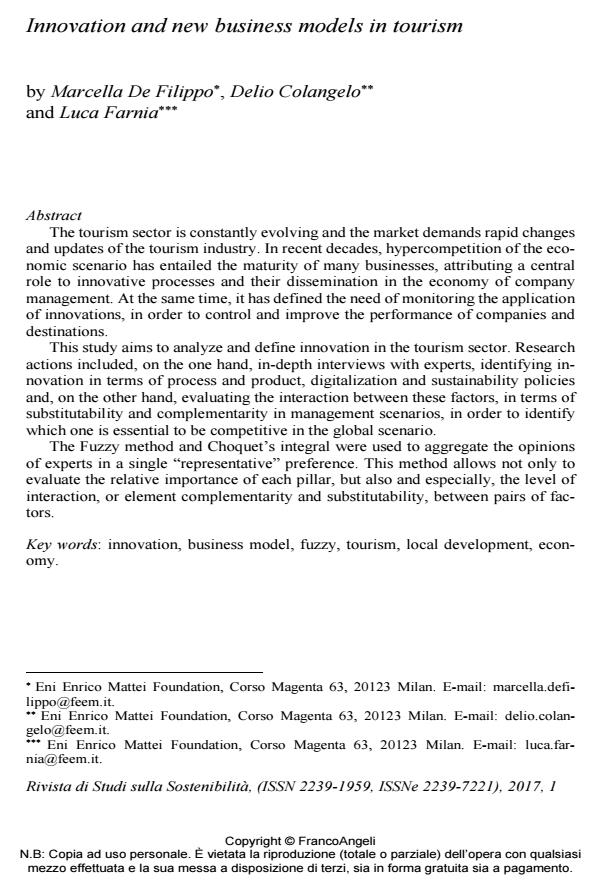Innovation and new business models in tourism
Journal title RIVISTA DI STUDI SULLA SOSTENIBILITA'
Author/s Marcella De Filippo, Delio Colangelo, Luca Farnia
Publishing Year 2017 Issue 2017/1
Language English Pages 20 P. 149-168 File size 259 KB
DOI 10.3280/RISS2017-001010
DOI is like a bar code for intellectual property: to have more infomation
click here
Below, you can see the article first page
If you want to buy this article in PDF format, you can do it, following the instructions to buy download credits

FrancoAngeli is member of Publishers International Linking Association, Inc (PILA), a not-for-profit association which run the CrossRef service enabling links to and from online scholarly content.
The tourism sector is constantly evolving and the market demands rapid changes and updates of the tourism industry. In recent decades, hypercompetition of the economic scenario has entailed the maturity of many businesses, attributing a central role to innovative processes and their dissemination in the economy of company management. At the same time, it has defined the need of monitoring the application of innovations, in order to control and improve the performance of companies and destinations. This study aims to analyze and define innovation in the tourism sector. Re-search actions included, on the one hand, indepth interviews with experts, identifying innovation in terms of process and product, digitalization and sustainability policies and, on the other hand, evaluating the interaction between these factors, in terms of substitutability and complementarity in management scenarios, in order to identify which one is essential to be competitive in the global scenario. The Fuzzy method and Choquet’s integral were used to aggregate the opinions of experts in a single "representative" preference. This method allows not only to evaluate the relative importance of each pillar, but also and especially, the level of interaction, or element complementarity and substitutability, between pairs of factors.
Keywords: Innovation, business model, fuzzy, tourism, local development, economy.
- Reviving Businesses With New Organizational Change Management Strategies Albérico Travassos Rosário, pp.1 (ISBN:9781799874522)
- Social Media Strategies for Tourism Interactivity João Ferreira do Rosário, Ana Teresa Machado, Miguel Belo, Filipe Segurado Severino, Célia M.Q. Ramos, Maria de Lurdes Calisto, Teresa Costa, pp.66 (ISBN:9798369309605)
Marcella De Filippo, Delio Colangelo, Luca Farnia, Innovation and new business models in tourism in "RIVISTA DI STUDI SULLA SOSTENIBILITA'" 1/2017, pp 149-168, DOI: 10.3280/RISS2017-001010